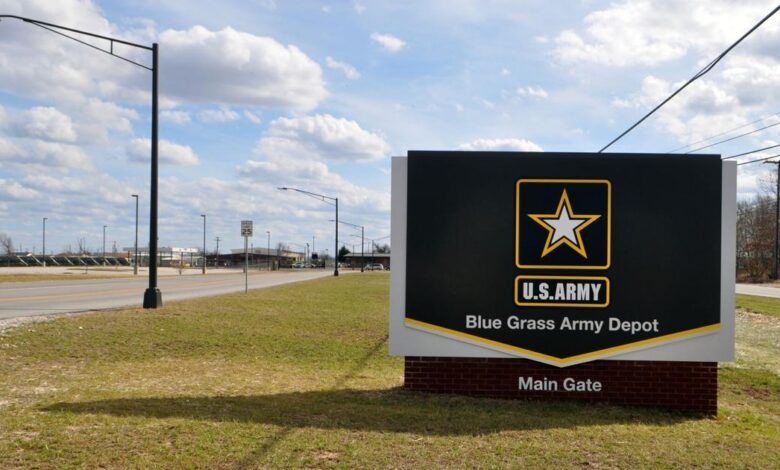Army testing artificial intelligence in security | Military Scene

Engineering and Support Center, Huntsville alongside other organizations through the Army Physical Security Enterprise and Analysis Group is leading the effort to test Artificial Intelligence integration into existing security systems at Blue Grass Army Depot, Kentucky.
The system is designed to improve the existing security measures by detecting a wide range of threats, including intruders, weapons, fights, fires and even behavioral anomalies.
Milestone two of testing began May 14 to test AI integrated security systems for area detection in areas with dense vegetation and near the perimeter with traffic in the background.
“We are utilizing AI for the first time in intrusion detection,” Leigh Young, Huntsville Center’s Electronic Security Systems Mandatory Center of Expertise lead engineer, said. “We’ve used analytics on video streams previously, but using AI is more dynamic.”
The AI integration aims to provide real-time alerts and details for emergency situations to reduce response times and improve overall safety for the installation.
“This will significantly help us narrow down nuisance alarms and reduce response times for security operators,” Young said.
After testing the feasibility of the integration of AI in milestone one to accomplish intrusion detection against a traditional detection methodology, milestones two and three will test the extent of what AI can be utilized for throughout security measures.
This includes testing the deployment of AI-enhanced drones and radar systems designed to bolster defense capabilities and ensure the safety of personnel and assets.
“This was an eye-opener regarding physical security equipment modernization with the interoperability of commercial off-the-shelf systems and ability to detect weapons,” Jon Guba, Huntsville Center project engineer, said.
The drones will be equipped with high-resolution cameras to autonomously patrol the depot’s perimeter, providing aerial surveillance and filling in gaps of coverage.
“Incorporating radar systems and drones will provide another means of detection that way operators would have a more accurate depiction of situations to better strategize responses,” Young said.
The goal of the new AI-enabled radar is to better differentiate between various objects, such as distinguishing between wildlife and human intruders.
Young elaborated on the learning capability of AI, “One of the benefits of using AI is that it continuously learns. It knows what a car looks like compared to a person or animal.
“As it continues to learn, we can refine its knowledge to determine typical activities from unusual behavior. That is something we have never been able to teach the traditional sensors.”
The project is estimated to continue testing for another three to five years.
“We’re working to develop criteria for questions like how scalable it is, what the long-term costs will be, how well does it interact with different systems,” Young said.
“Chris Willoughby, Joint Munitions Command ESAS manager, was the brainchild behind the project and his work has been instrumental in enhancing security efforts for Blue Grass Army Depot.”
This initiative is part of a broader Army effort to modernize and actively pursue the integration of AI across various domains to improve operational effectiveness and readiness.
“Our testing team, Blue Grass Army Depot Electronic Security Systems, and Huntsville Center’s Electronic Security Systems Mandatory Center of Expertise have done a phenomenal job reaching out to technology leaders and getting headquarters’ to be involved. I truly believe it has opened everyone’s eyes to new technology and advancing our security posture with this type of technology,” Willoughby said.
Young explained the importance of pursuing the use of new technology, “The Army’s modernization strategy and this effort emphasize the importance of using new technology to maintain a competitive edge and enhance national security.”



